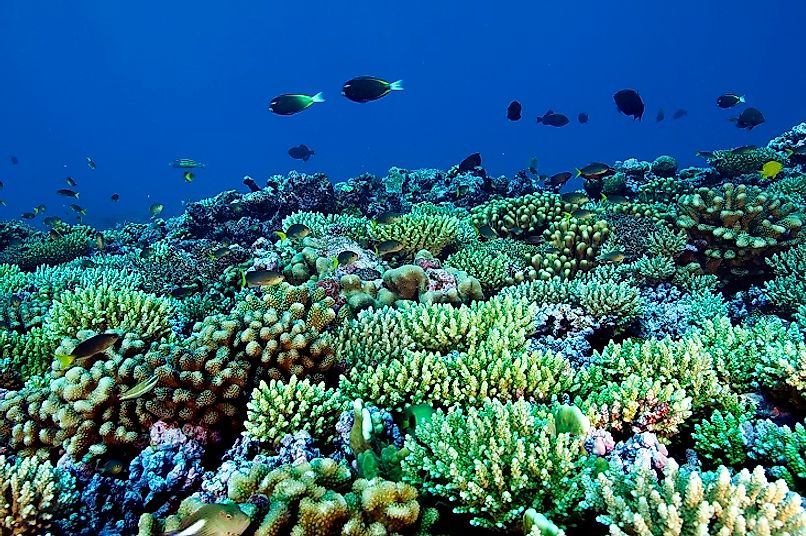Phoenix Islands Protected Area (PIPA), Kiribati

5. Physical Geography -
The Phoenix Islands Protected Area (PIPA) is located in the Polynesian hot spot of the South Pacific Ocean, midway between Hawaii and Fiji. It encompasses an area of 157,630 square miles, making PIPA the second largest marine protected area in the world. Additionally, this area is the largest UNESCO World Heritage Site in the world. The physical geography of PIPA includes a deep ocean environment filled with at least 30 submerged volcanoes, 8 atolls, and 2 reef systems.
4. Research, Education, and Tourism -
Because of its remote location, the Phoenix Islands Protected Area has remained virtually untouched and unchanged by human activity. This pristine condition allows researchers to use it as a reference site against other, human occupied areas. Researchers are monitoring and studying the environment here in order to gain insight into the effects of climate change. Other research focuses on deep sea exploration, coral reef bleaching and recovery, and the relationship between social and environmental systems. PIPA has no tourism infrastructure and is extremely difficult to reach. In fact, visitors may only arrive by either a private boat or plane. The boat trip takes approximately 5 days from Fiji.
3. Administration and Management -
This Phoenix Islands Protected Area belongs to Kiribati and is the responsibility of the Kiribati government. As a UNESCO World Heritage Site, is required to be administered by a management plan. This government holds that responsibility and under this distinction, a PIPA Management Committee was established. This committee focuses on sustainable management practices, in particular, capturing illegal fishing endeavors and removing invasive species from the islands. The government also collaborated with Conservation International and the New England Aquarium in order to establish the PIPA Trust Fund. This fund is in use to ensure adequate funding is available to continue supporting management and conservation of this area.
2. Habitats and Biodiversity -
The Phoenix Islands Protected Area is considered an important stepping stone habitat for certain keystone migratory and planktonic species of the Pacific Ocean. Its tropical and marine habitats are virtually untouched by humans and as such offer a wide variety of plant and animal species. Many of the wildlife found here are now extinct in other areas around the world. The waters surrounding its atolls are some of the deepest around the world and potentially harbor species that are yet to be discovered. In addition, PIPA is home to one of the largest, unchanged coral archipelago reef ecosystem in the world. There are approximately 200 coral species, 500 fish species, 44 bird species, and 18 marine mammals that inhabit this region. Sea turtles, sharks, dolphins, parrotfish, seabirds, manta rays, coral, coconut crabs, and giant clams are some of the many species living in this protected area.
1. Environmental Threats and Conservation Efforts -
One of the biggest environmental threats to the Phoenix Islands Protected Area is the presence of non-native, invasive species. This has had a particularly detrimental effect on seabirds and their young as well as native plants. Some of these species include cats, dogs, rats, and pigs. These animals move in and compete for local resources, destroying local populations. In 2006, researchers conducted a survey of invasive species and determined that their removal was crucial to maintaining the natural habitats and environments of PIPA. Conservation and recovery efforts began in 2008, targeting invasive species. By 2009, eradication of rats and rabbits on the islands of McKean and Rawaki had been successful with seabirds returning after being gone for over a decade. Another eradication effort took place successfully in 2011 on the islands of Enderbury and Birnie.











